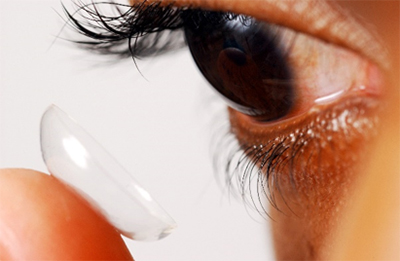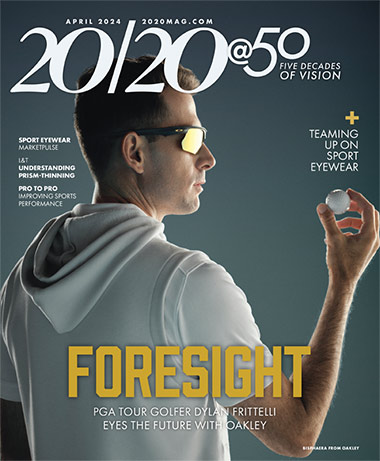 |
Current treatments for CLIDE include rewetting drops, gels, or lubricants, more frequent lens replacement, or changes in the lens material. There also are eyelid treatments, such as eyelid massage and warm compresses. In more severe cases, physical stimulation of the tear glands may be utilized, as well as the use of punctum plugs, devices inserted into tear ducts to block drainage. Several contact lens manufacturers have developed contact lenses specifically designed to alleviate dry eye discomfort during lens wear. Methods include a manufacturing process that retains moisture in the lens, a water gradient design that increases water content from the core to the lens surfaces, lens materials and treatments that attract and bind water to the lens surface, and self-moisturizing lenses stimulated with metallic electrodes.
Now, a collaborative team from the Terasaki Institute for Biomedical Innovation (TIBI) has developed a contact lens prototype that is specifically designed to prevent CLIDE. The lens alleviates this condition by facilitating tear flow in response to normal eye blinking. The TIBI team’s approach uses a contact lens design that incorporates microchannels to facilitate tear flow to prevent dry eye. This flow can be achieved by pressure applied by normal eye blinking so that no external devices are needed.
The microchannels are encapsuled in a sandwich-like assembly under a capping lens layer and include reservoirs at the ends of each microchannel for the inflow and outflow of tears. The channels are arranged in a pinwheel like pattern, with square cross-sections arrayed in a circular pattern on the lens surface. The lenses were tested for stability and leakage, then put through a series of experiments using a device that the team designed to simulate a blinking eyelid. This device created artificial eyelid pressure on the lens to stimulate tear flow. Results showed that low-pressure levels like those from normal eye blinking guided tear flow from the lens surface to the underside of the lens. Further experiments and methods are needed to test these lenses on animal models and in patients. With this unique design, the future may hold contact lenses with the potential to help prevent or minimize CLIDE and discomfort by the enhanced transport of the eye’s own pre-lens tears to the post-lens ocular surface.













